Long-term protection and mechanism of pacing-induced postconditioning in the heart
- PMID: 20336304
- PMCID: PMC2862957
- DOI: 10.1007/s00395-010-0095-2
Long-term protection and mechanism of pacing-induced postconditioning in the heart
Abstract
Brief periods of ventricular pacing during the early reperfusion phase (pacing-induced postconditioning, PPC) have been shown to reduce infarct size as measured after 2 h of reperfusion. In this study, we investigated (1) whether PPC leads to maintained reduction in infarct size, (2) whether abnormal mechanical load due to asynchronous activation is the trigger for PPC and (3) the signaling pathways that are involved in PPC. Rabbit hearts were subjected to 30 min of coronary occlusion in vivo, followed by 6 weeks of reperfusion. PPC consisted of ten 30-s intervals of left ventricular (LV) pacing, starting at reperfusion. PPC reduced infarct size (TTC staining) normalized to area at risk, from 49.0 +/- 3.3% in control to 22.9 +/- 5.7% in PPC rabbits. In isolated ejecting rabbit hearts, replacing LV pacing by biventricular pacing abolished the protective effect of PPC, whereas ten 30-s periods of high preload provided a protective effect similar to PPC. The protective effect of PPC was neither affected by the adenosine receptor blocker 8-SPT nor by the angiotensin II receptor blocker candesartan, but was abrogated by the cytoskeletal microtubule-disrupting agent colchicine. Blockers of the mitochondrial K(ATP) channel (5HD), PKC (chelerythrine) and PI3-kinase (wortmannin) all abrogated the protection provided by PPC. In the in situ pig heart, PPC reduced infarct size from 35 +/- 4 to 16 +/- 12%, a protection which was abolished by the stretch-activated channel blocker gadolinium. No infarct size reduction was achieved if PPC application was delayed by 5 min or if only five pacing cycles were used. The present study indicates that (1) PPC permanently reduces myocardial injury, (2) abnormal mechanical loading is a more likely trigger for PPC than electrical stimulation or G-coupled receptor stimulation and (3) PPC may share downstream pathways with other modes of cardioprotection.
Figures

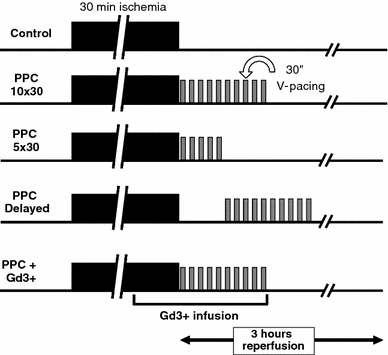
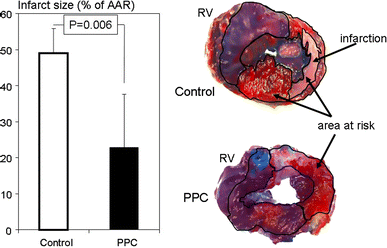
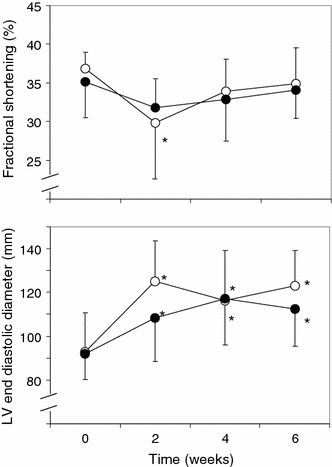
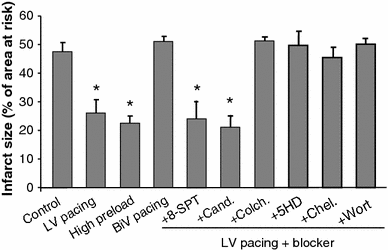
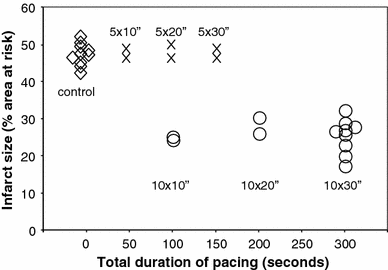

References
-
- Banerjee A, Locke-Winter C, Rogers KB, Mitchell MB, Brew EC, Cairns CB, Bensard DD, Harken AH. Preconditioning against myocardial dysfunction after ischemia and reperfusion by an alpha 1-adrenergic mechanism. Circ Res. 1993;73:656–670. - PubMed
-
- Bode F, Katchman A, Woosley RL, Franz MR. Gadolinium decreases stretch-induced vulnerability to atrial fibrillation. Circulation. 2000;101:2200–2205. - PubMed
MeSH terms
LinkOut - more resources
Full Text Sources

